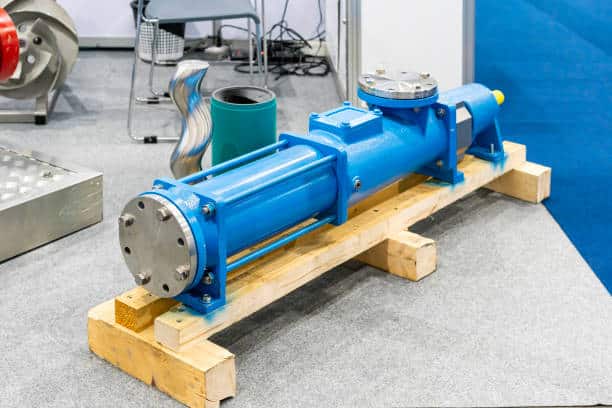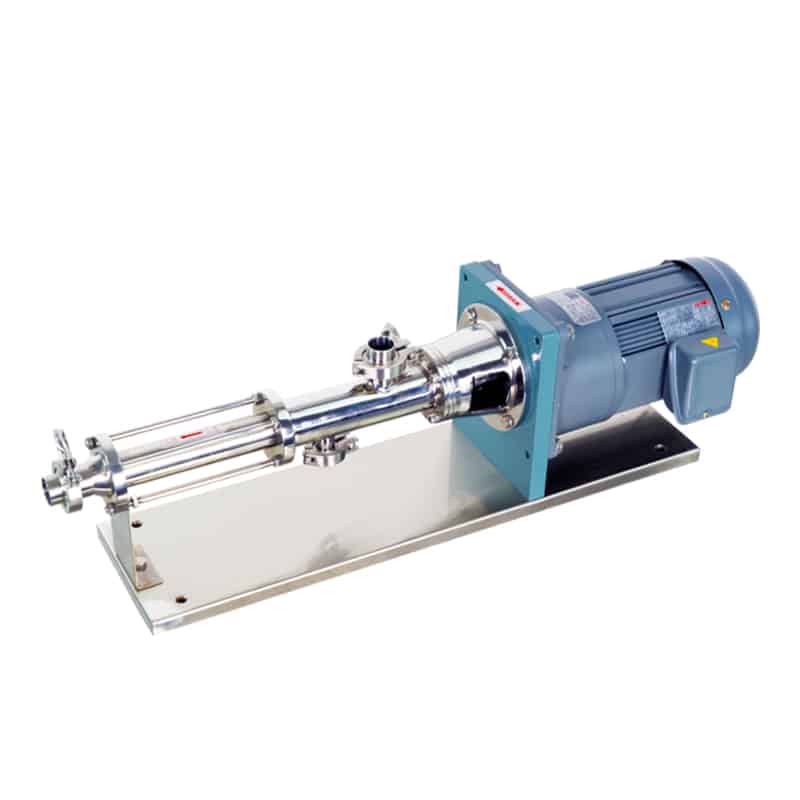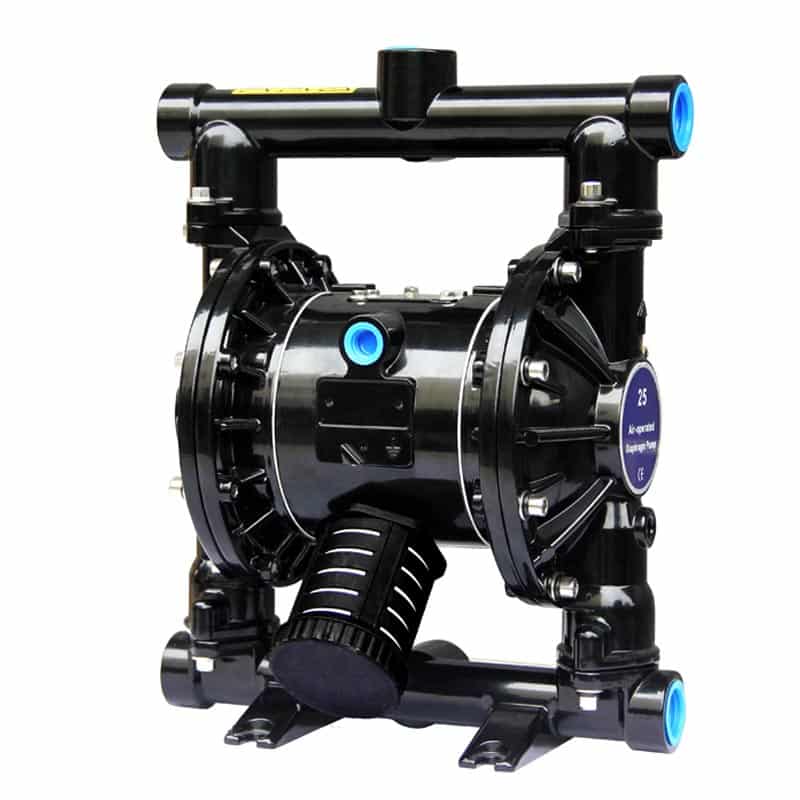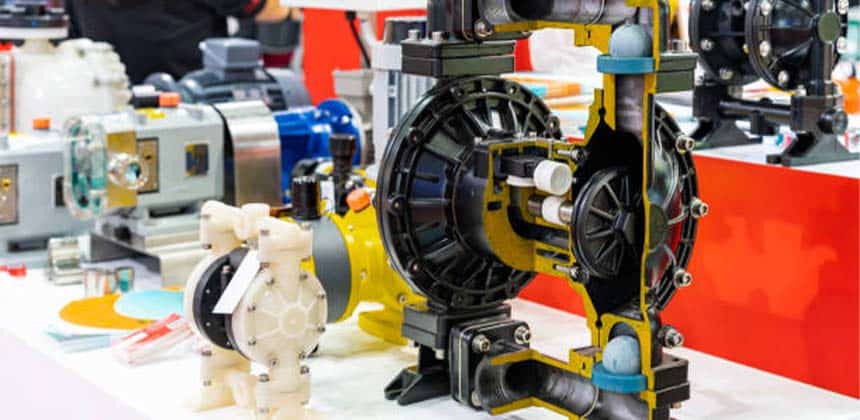Positive Displacement Pump
What is the construction of a positive displacement pump?
The construction of a positive displacement pump consists of the following key components:
- Pump casing: The pump casing is the outer shell of a positive displacement pump, usually made of metal or alloy, used to house the internal components of the pump. Pump casing usually has inlet and outlet piping connections.
- Pump cavity: Pump cavity is located inside the pump casing space, used to contain the liquid. The size and shape of the pump cavity varies according to the specific type of positive displacement pump.
- Moving components: The moving components of a positive displacement pump are the key components used to move and discharge the liquid. Different types of positive displacement pumps use different moving components, for example:
- Plunger pumps use a plunger or plunger-type piston that moves up and down inside the pump chamber to propel the liquid.
- Gear pumps use rotating gears that mesh with each other to propel the liquid.
- Twin-screw pumps consist of two screws that rotate inside the pump chamber and propel the liquid.
- Diaphragm pumps use a diaphragm to compress and expand, pushing liquid in and out.
- Single-screw pump/Progressive Cavity Pump including a single screw, screw in the pump cavity to rotate and push the liquid.
- Seals: To prevent leakage of liquids, positive displacement pumps usually have seals such as O-rings, sealing rings or diaphragms. These seals are used to maintain a seal between the pump chamber and moving parts to ensure that fluid does not escape.
- Inlet and outlet piping: Positive displacement pumps typically have inlet and outlet piping that allows fluid to enter and exit the pump. These piping are usually attached to the pump casing for connection to a transfer line or system.
How positive displacement pump work?
The operating principle of positive displacement pumps is based on capturing and discharging a fixed volume of liquid by continuously changing the volume of the pump chamber. The following is the general operating principle of a positive displacement pump:
- Expansion and contraction of pump chambers: Positive displacement pumps usually consist of one or more pump chambers that can be expanded and contracted by different mechanical configurations. The pump chamber contains a certain amount of liquid, usually introduced through the suction port.
- Liquid suction: When the pump chamber expands, the internal pressure decreases, which causes liquid to enter the pump chamber through the suction port. The suction port is usually located in the inlet or suction side of the pump.
- Liquid discharge: Once the pump chamber reaches its maximum volume, the pump chamber begins to contract, causing the pressure inside the chamber to rise. This forces the liquid out through the discharge port. The discharge outlet is usually located on the outlet or discharge side of the pump.
- Continuous cycle: The process of expansion and contraction of the pump chamber is constantly cycling, with each cycle capturing and discharging the same fixed volume of liquid. This sequence of movements allows the liquid to be continuously transported, both at low and high pressures.

The key to positive displacement pumps is the mechanical construction that controls the change in volume of the pump chamber to capture and discharge the liquid. Different types of positive displacement pumps (e.g., reciprocating pumps, rotary pumps, peristaltic pumps, etc.) have different mechanical configurations and principles of operation, but they all rely on changing the volume of the pump chamber to propel the liquid flow.
Are there any limitations of positive displacement pumps in high pressure and high viscosity situations?
Viscosity sensitivity
Positive displacement pumps can be problematic when handling highly viscous liquids, as higher viscosity liquids increase the load and durability requirements of the pump. In such cases, additional power or a specially designed pump may be required.
Option: Therefore, when handling high viscosity liquids, a more powerful motor or drive system is usually required to provide enough power to push the liquid.
Special design of positive displacement pumps is sometimes required to accommodate the handling of highly viscous fluids. This may include design modifications in the following areas:
- Increase pump chamber size: Increasing the size of the pump chamber provides more space to accommodate liquids with higher viscosities and reduces the resistance of the liquid within the pump.
- Improve sealing and lubrication systems: Highly viscous liquids may put additional stress on the pump’s sealing and lubrication systems, so these systems need to be improved to ensure proper pump operation.
- Use special materials: For some highly viscous liquids, special materials may need to be used to resist corrosion or abrasion to extend the life of the pump.
- Reduce operating speed: Reducing the operating speed of the pump reduces friction and wear and improves the efficiency of the pump in highly viscous liquids.
Limited precision
Positive displacement pumps typically provide relatively accurate flow control, but their accuracy may be compromised to some degree at high differential pressures or in highly viscous fluids.
Option: It is important to select the type and size of positive displacement pump that is right for a particular application. Different types of positive displacement pumps have different performance characteristics, such as piston, peristaltic or gear pumps. Proper selection of the appropriate pump type and size can reduce the degree of performance limitation under high differential pressure or high viscosity conditions. The KES25 1″ Plastic Diaphragm Pump is an excellent choice.
If possible, reducing the viscosity of the liquid can improve pump performance. This can be accomplished by heating the fluid, diluting the fluid, or using special lubricants.
In the case of high differential pressure or high viscosity, appropriate adjustments to the operating conditions, such as reducing the flow rate or lowering the required flow accuracy requirements, can be considered to reduce the load on the pump. For high pressure applications, consider using a booster at the outlet of the positive displacement pump to increase output pressure and improve fluid delivery.
Any other limitations?
- Damage-prone parts: Positive displacement pumps typically contain damage-prone parts such as seals, pistons, plungers, etc. These parts may require more frequent maintenance and replacement to ensure proper pump operation.
- Not suitable for high speeds: Positive displacement pumps are generally not suitable for high speed applications as high speeds can lead to mechanical wear and damage, as well as increased vibration and noise.
- Not for non-pressure stabilized fluids: Positive displacement pumps require that the pressure differential between the input and output fluids remain relatively constant. Large fluctuations in input or output pressure may result in unstable pump performance.
- Relatively large size: Positive displacement pumps are often complex in design and relatively large in size, which limits their use in applications where space is limited or compact design is required.
- Higher energy consumption: Compared with some other pump types, positive displacement pumps typically require more energy to maintain the continuous expansion and contraction of the pump chamber, especially in high-pressure differentials or high viscosity liquids.
- Requires regular maintenance: Because they contain many moving parts, positive displacement pumps require regular maintenance to ensure performance and longevity. This may involve seal replacement, cleaning and lubrication.
What positive displacement pumps are available that are unaffected by high pressures or high viscosity fluids?
Plunger pumps
Piston pumps are typically used in a wide range of high-pressure applications because of their rugged design and excellent pressure resistance. This makes them ideal for applications that require them to operate at high differential pressures, such as high pressure washers, hydronic systems and high pressure injection systems. However, highly viscous fluids can pose additional challenges to plungers and seals, so special materials and design improvements may be required in these cases.
Gear pumps
Gear pumps are in general suitable for the transportation of highly viscous liquids. Their principle of operation involves a tight fit between the gears, which helps in pushing liquids of higher viscosity without much effect. This makes them excellent in applications that require the transfer of highly viscous media, such as their use in the chemical and petroleum industries.
Twin-screw pumps
Twin screw pumps are widely used for high viscosity fluid transfer. Their design includes two screws that are able to efficiently push fluids with higher viscosity without significantly affecting performance. As a result, they are useful in handling high viscosity fluids such as pasty liquids, petroleum, food, chemicals, and more.
Single-screw pump
The progressive cavity pump, also known as a single screw pump, is suitable for the transfer of high-pressure and high-viscosity liquids. Their design consists of a screw or auger which rotates in the pump chamber, thus pushing the liquid. Progressive cavity pumps are typically used to handle highly viscous, pasty liquids and semi-solid particle suspensions without degrading performance. They are common in a variety of applications such as food processing(Food Grade Progressive Cavity Pump), petrochemicals, wastewater treatment(Progressive Cavity Metering Pump) and the paper industry.


Diaphragm pumps
Air diaphragm pumps are typically suited for applications with high differential pressures, and due to their diaphragm design, they can also handle some highly viscous liquids. These pumps(Example: KES25 1″ Metal Diaphragm Pump) are very common in applications that require a high degree of leak tightness, such as chemical processing, food processing and pharmaceutical production.


Submersible pumps
Submersible pumps are designed to work in liquids and are commonly used in drainage systems and deep well pumping stations. They can handle high differential pressures and conditions with different liquids, including highly viscous liquids.
Positive displacement, centrifugal and axial flow pumps
| Characteristic | Positive Displacement Pump | Centrifugal Pump | Axial Flow Pump |
| Common Types | Reciprocating, Rotary, Peristaltic, Lobe, Plunger, Diaphragm | Single-stage, Multi-stage, Submersible | Propeller, Mixed-Flow |
| Operating Principle | Constantly changes pump chamber volume to capture and discharge fluid | Generates centrifugal force to draw in and discharge fluid through rotating impeller | Flows fluid along the axial direction without changing fluid volume |
| Suitable Fluid Types | High viscosity, high pressure, precise control | Clear fluids, low to medium pressure | High flow rates, low to medium pressure |
| Main Application Areas | Chemical, pharmaceutical, food, high-viscosity fluid transport | Water supply, drainage, cooling, industrial applications | Drainage systems, cooling towers, irrigation |
| Flow Control | Precise flow control | Flow influenced by pressure and impeller diameter | Flow influenced by axial velocity and impeller design |
| Pressure Capability | High-pressure capability | Low to medium pressure | Low to medium pressure |
| Operational Efficiency | Relatively high | Medium | Medium |
| Maintenance and Care | Requires regular maintenance and seal replacement | Requires relatively less maintenance | Requires relatively less maintenance |
What are the positive displacement pumps in life?
- Automotive engine oil pumps: The engines of automobiles typically use positive displacement pumps to circulate and deliver lubricating oil to keep engine parts lubricated and cool.
- Bicycle and motorcycle oil pumps: Some bicycles and motorcycles use positive displacement pumps to deliver the two-stroke oil needed for two-stroke engines.
- Cooling system pumps: Many domestic and commercial cooling systems use positive displacement pumps to circulate coolant to maintain the temperature of the engine or equipment.
- Diesel engine fuel pumps: Some diesel engines use positive displacement pumps to transfer fuel to the combustion chamber to support the combustion process.
- Pressure washers: Commercial and domestic pressure washers typically use positive displacement pumps to increase the pressure of water for cleaning and rinsing tasks.
- Food processing equipment: Positive displacement pumps are commonly used in food production and processing equipment, such as chocolate production lines and syrup conveying systems, to convey viscous food ingredients.
- Printing machinery: Certain equipment in the printing industry uses positive displacement pumps to transfer ink to ensure a continuous printing operation.
- Pharmaceutical equipment: The pharmaceutical industry uses positive displacement pumps to convey drugs, chemicals and other raw materials for the manufacture of pharmaceuticals and medical products.
- Aircraft hydraulics: Positive displacement pumps are often included in aircraft hydraulic systems to provide energy to operate landing gear, rudders and other flight controls.
- Oil well injection pumps: In oil and gas production, positive displacement pumps are used to inject water or other fluids to increase the capacity of an oil well.
Summary
Positive displacement pumps are a class of pump types used to transfer liquids with features including constant displacement, self-priming, high pressure capability, and viscosity tolerance. Common types include piston pumps, gear pumps, twin screw pumps, diaphragm pumps, and screw pumps, which are used in a wide range of applications in the oil and gas, chemical, food, pharmaceutical, construction, wastewater treatment, and other industries to provide reliable liquid transfer and flow control.
AOBL carries a wide range of AODD pumps and fluid handling products and solutions to ensure your success, feel free to contact us.

